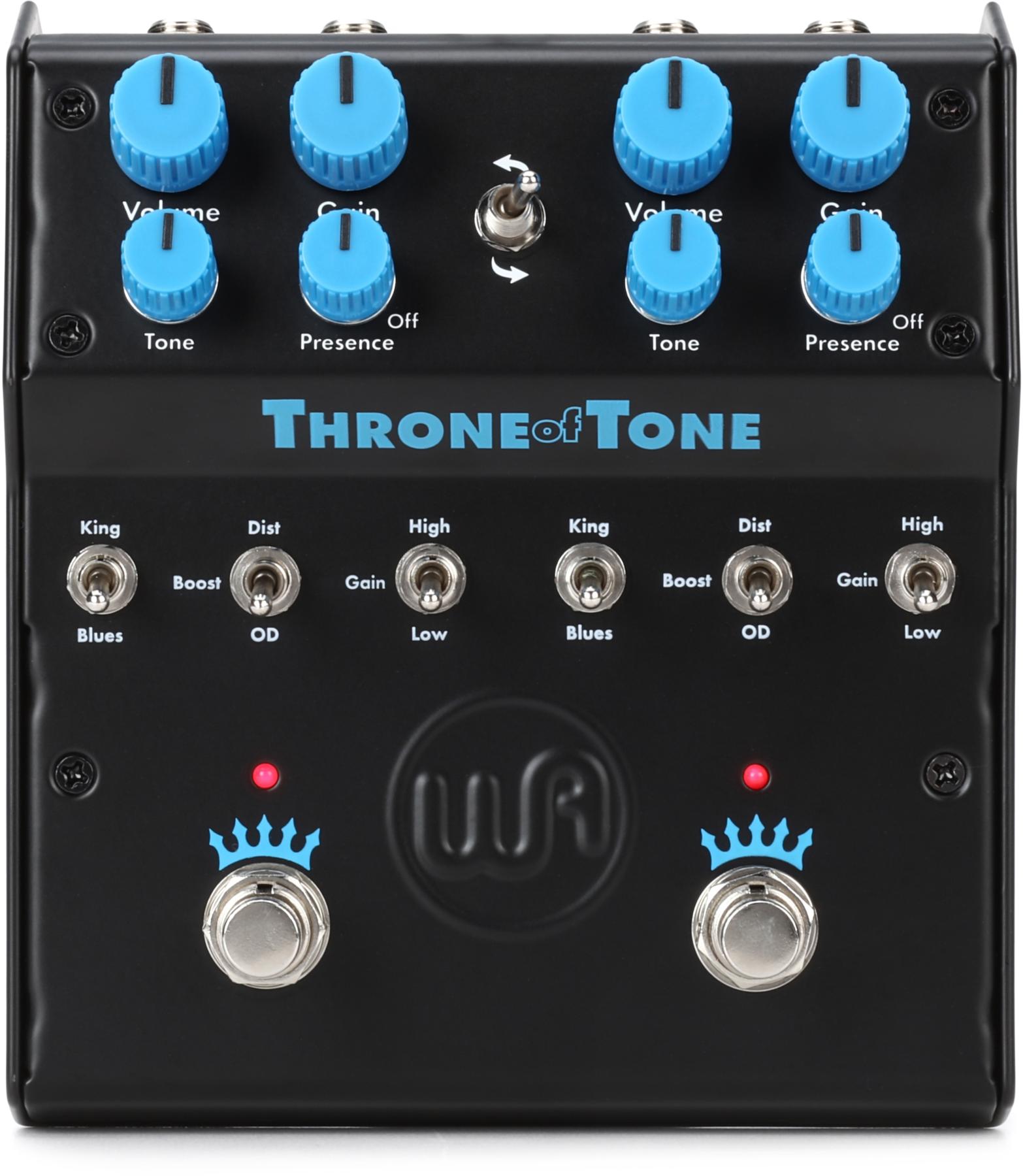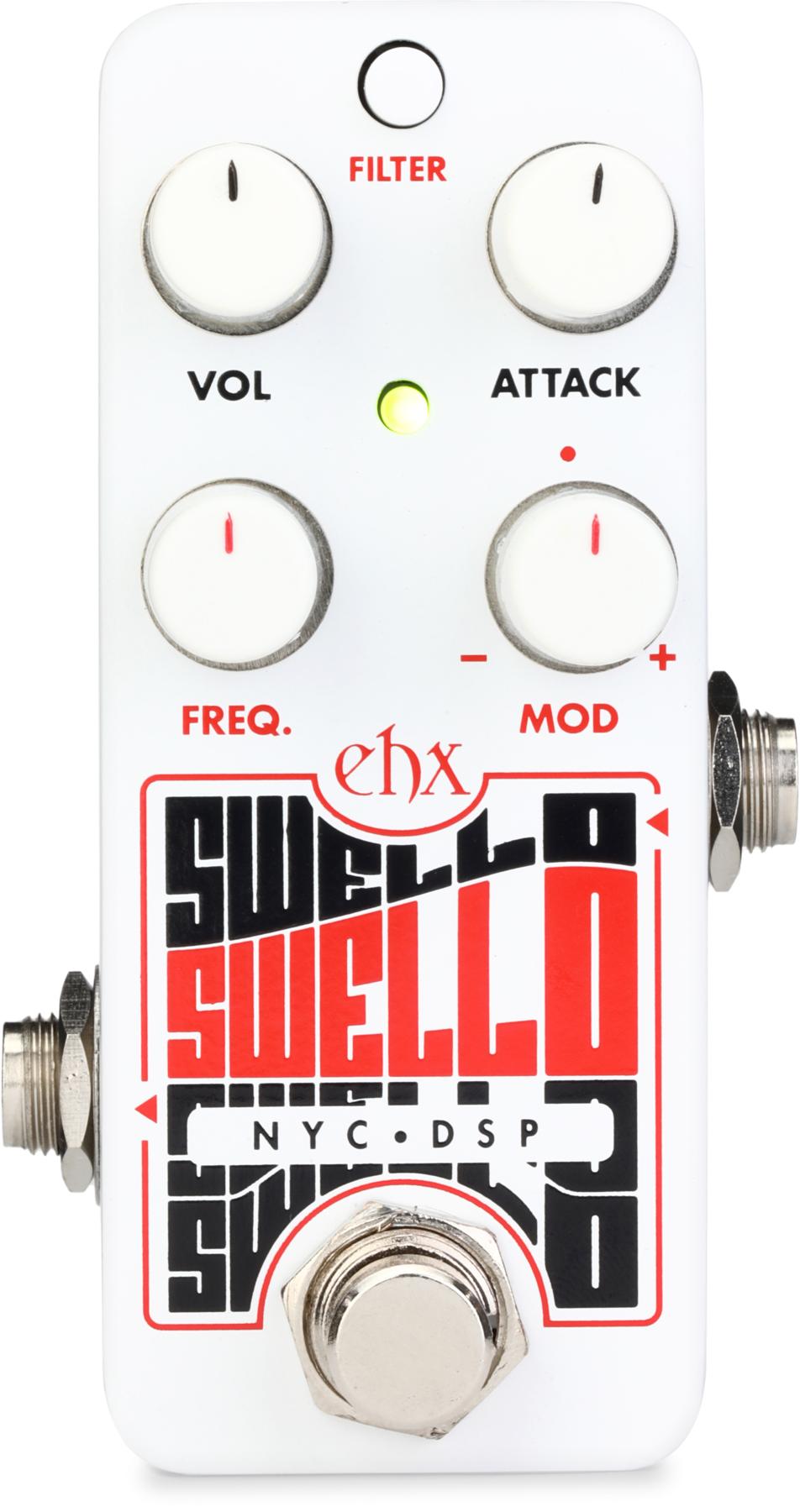| Click here to download the song "Trippin' (All Over the World)" by modern doubleneck player Ron Weinstein. |
Joe Maphis
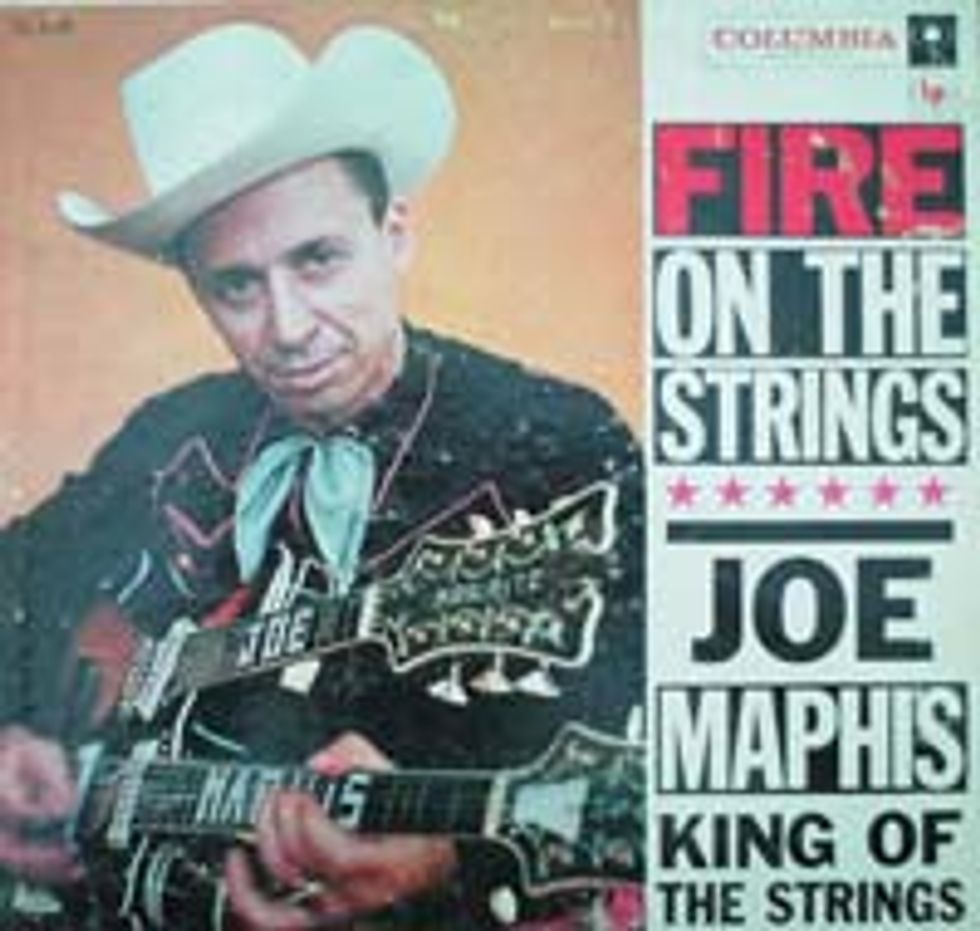 Perhaps the first modern electric doubleneck
guitarist was Otis W. “Joe” Maphis, born in
1921 in Suffolk, Virginia. Equally at home on
guitar, fiddle, banjo and mandolin, Maphis is
frequently cited as a disciple of Merles Travis
and regarded as the first guitarist to flatpick
fiddle tunes. He worked extensively in his
home area, quickly gaining a reputation as a
hot player. He and his wife, Rose, relocated
to the Bakersfield, California area, where
Joe became an in-demand session player,
working with such stars as Tex Ritter, Wanda
Jackson and Rick Nelson.
Perhaps the first modern electric doubleneck
guitarist was Otis W. “Joe” Maphis, born in
1921 in Suffolk, Virginia. Equally at home on
guitar, fiddle, banjo and mandolin, Maphis is
frequently cited as a disciple of Merles Travis
and regarded as the first guitarist to flatpick
fiddle tunes. He worked extensively in his
home area, quickly gaining a reputation as a
hot player. He and his wife, Rose, relocated
to the Bakersfield, California area, where
Joe became an in-demand session player,
working with such stars as Tex Ritter, Wanda
Jackson and Rick Nelson.In 1955, the enigmatic Semie Moseley, an unabashed Maphis fan, built Joe a doubleneck electric with one standard-sized neck and another in a shorter scale that enabled Joe to play mandolin-like passages. Maphis wasted no time in employing the instrument, both in the studio and live, where he was dubbed “King of the Strings.” Johnny and June Carter Cash were Maphis fans. Joe’s list of recordings both as a sideman and leader are impressive, and he also made many TV appearances on the Jimmy Dean Show and others. He passed away in 1986, and is buried next to Mother Maybelle Carter, on land owned by the Johnny Cash estate. His famous Mosrite doubleneck is now on display at the Country Music Hall of Fame.
Grady Martin
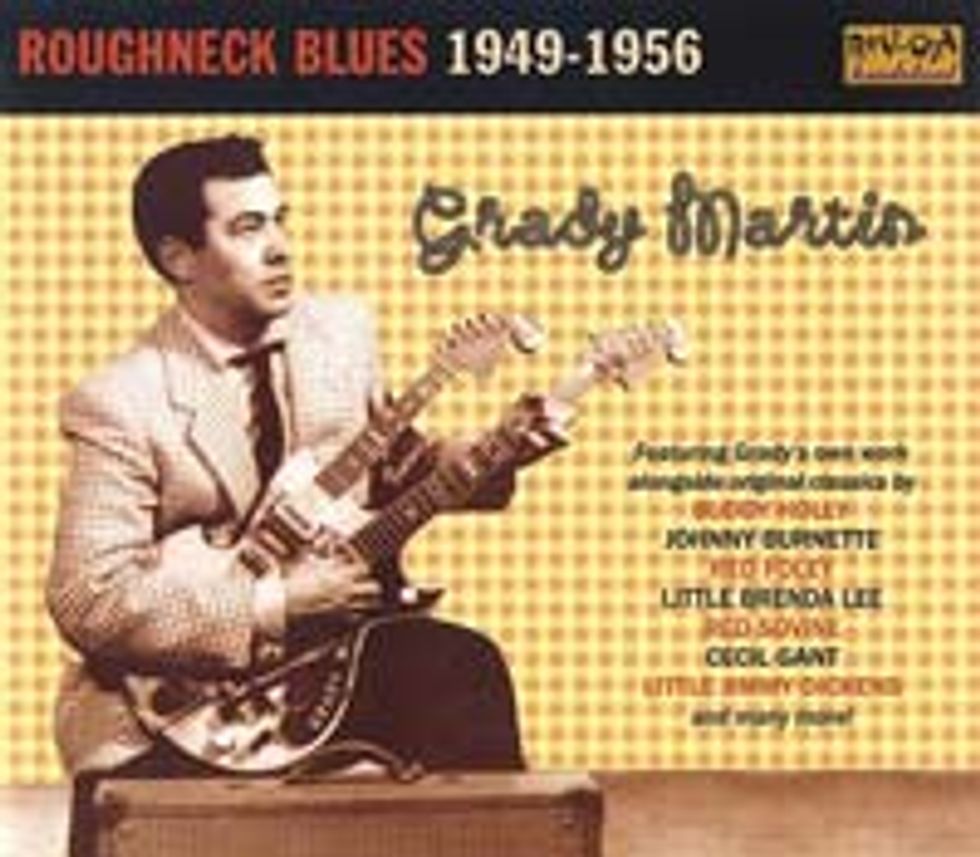 Grady Martin was born in 1929 in Marshall
County, Tennessee, and gravitated toward
music at an early age. Martin took up the guitar,
became proficient quickly, and dropped
out of high school to work on a radio station
in Nashville. Over the years, he became a
busy Nashville session musician, an original
member of the famed “A Team,” played the
immortal guitar riff on Roy Orbison’s “Oh,
Pretty Woman,” and was the perhaps the first
guitarist to experiment with fuzz, when his
amp malfunctioned during a Marty Robbins
recording session.
Grady Martin was born in 1929 in Marshall
County, Tennessee, and gravitated toward
music at an early age. Martin took up the guitar,
became proficient quickly, and dropped
out of high school to work on a radio station
in Nashville. Over the years, he became a
busy Nashville session musician, an original
member of the famed “A Team,” played the
immortal guitar riff on Roy Orbison’s “Oh,
Pretty Woman,” and was the perhaps the first
guitarist to experiment with fuzz, when his
amp malfunctioned during a Marty Robbins
recording session.Martin used a custom doubleneck made by Paul Bigsby from 1952 to 1954, as a featured performer on the Ozark Jubilee television show. The guitar featured a standard 6-string neck on the bottom, and a 5-string mandolin neck on top. During his long career, Martin played with Loretta Lynn, Sammi Smith, Patsy Cline, Johnny Cash, Buddy Holly, Bing Crosby, Johnny Burnette, and many others. He is a member of the Rockabilly Hall of Fame, and was a member of Willie Nelson’s band for fifteen years until deteriorating health forced his retirement. Martin passed away in 2001.
Larry Collins
Guitar prodigy Larry Collins was only 10 when he and his older sister Lorrie formed a duo, aptly named The Collins Kids. Larry was taken with the Mosrite doubleneck of Joe Maphis, and he and Maphis played together often. Semie Moseley was very happy to build one of his doublenecks for Collins, who quickly adapted his rock ‘n’ roll licks to the instrument. Born in Oklahoma in 1944, Larry and Lorrie (who played the girlfriend of Rick Nelson on the Ozzie & Harriet Show), enjoyed a great deal of national attention in the 1950s, but never scored a big hit, as many thought they would.
After the siblings parted ways in the 1960s, Larry kept busy as a songwriter, penning Tanya Tucker’s smash hit “Delta Dawn,” and others. Collins’ material has been covered by a wide range of artists, including Waylon Jennings, Helen Reddy, Bette Midler, Lou Rawls, Gary Puckett, Nancy Sinatra and Merle Haggard to name a few. In 1993, Larry and Lorrie Collins reunited and successfully began working the rockabilly festival circuit, both here and abroad. Larry’s guitar playing is better than ever, as evidenced by his many videos on YouTube.
Jimmy Bryant
Jimmy Bryant was another early doubleneck player. Born in 1925 in Moultrie, Georgia, Bryant initially played fiddle on street corners for tips during the Depression. After being wounded in World War II, he began concentrating on his guitar playing and moved to Los Angeles, where he worked in films and in the bars around the city. He met steel guitarist Speedy West, and the two formed a brilliant instrumental duo with jazz and country leanings. Their notoriety and success led to a lucrative career in recording studios for Bryant, although he was regarded as being temperamental and difficult to work with. Bryant played a custom Missouri-made doubleneck instrument called the Sratosphere that employed both 6- and 12-string necks with the doubled strings tuned in parallel fourths, which required the guitarist to adjust his technique to accommodate this odd tuning. Bryant recorded two songs, “Stratosphere Boogie” and “Deep Water” with this guitar, before he began favoring the more conventional Fender Telecaster. He was also photographed with Rickenbacker guitars. Stratosphere guitars sank without a trace after Bryant stopped using his. A heavy smoker, he died at age 55 of lung cancer.
Deke Dickerson
Derek “Deke” Dickerson is a Missouri-born guitarist who covers a wide range of musical styles: surf, honky-tonk country, jazz, R&B, rock, rockabilly and more. He originally came to public attention as a member of Untamed Youth, an eighties punk/surf/garage band, and has since gone on to become a bona fide cult guitar hero. Dickerson owns a doubleneck electric called the TNM Custom that was built in 1957 by a protégée of Semie Moseley named Terry MacArthur, who was an enthusiastic 17-year-old at that point. He built two doublenecks, the second of which went to a local guitarist named Ernie Odom, who later traded it back to MacArthur for a Vox guitar (ouch!) sometime in the 1970s. Before doing that, Odom sanded the original sunburst finish off, and seemingly misplaced most of the parts and hardware, including the vintage Carvin pickups, the only aftermarket pickups obtainable at that point in time. The TNM languished in Terry MacArthur’s closet for 25 years until Dickerson bought the guitar from him. Over a two-year period, much horse-trading for parts, and three luthiers, not to mention literally thousands of dollars invested, the TNM Custom was totally restored to its original pristine condition in 2004. Dickerson had two new fretboards made with his name inlaid on both, and now uses the guitar regularly. Terry MacArthur was so jazzed with the restoration, he was inspired to begin building guitars again.
Junior Brown
Speaking of hot country players, the remarkable Junior Brown, a native of Austin, Texas, is certainly the most visible modern country guitarist using a doubleneck. A prodigiously talented Tele-picker and lap-steel guitarist, Brown has been labeled a musical genius by Musician magazine, and the only living musician elected to Life magazine’s “All Time Country Band.” Brown invented a new doubleneck instrument in 1985, with the help of luthier Michael Stevens, called the “guitsteel.” Brown commented on his website, JuniorBrown.com, “I was playing both the steel and guitar, switching back and forth a lot while I sang, and it was kind of awkward. But then I had this dream where they kind of melted together. When I woke up, I thought, ‘You know, that thing would work.’ They made doubleneck guitars and doubleneck steels, so why not one of each?” Stevens recently made Brown a second guit-steel, dubbed “Big Red.”
Jimmy Page
For many of us, the sight of Jimmy Page playing his cherry red Gibson EDS-1275 is one of the classic iconic images of rock guitar. Page began playing one after recording “Stairway To Heaven,” and used it extensively both live and on Led Zeppelin’s recordings, including “Rain Song,” “Celebration Day,” and “The Song Remains The Same.” Page commented on his use of the 1275 in a 2006 London interview conducted by guitarist Slash (currently available on YouTube and presented here in edited and clarified form): “I knew Gibson had made a doubleneck, and I was sort of aware of its presence. After having recorded the fourth album, which had ‘Stairway,’ which was definitely going to have to be played live, and was recorded with 12-string acoustic and electric, I needed something that would affect the pacing of that, you know, while still using the electric 12-string and electric 6-string neck. So that was it. The doubleneck was the one instrument that was going to fulfill it. The Gibson doubleneck became sort of iconic, you know? I had to use the doubleneck to play ‘Stairway’ live, and then it started to take shape.… The doubleneck was tailor-made for that.”
When asked if he had seen another guitarist using a doubleneck, Page remarked, “It probably was an American country guitarist, but it wasn’t Joe Maphis. He played a doubleneck, but it wasn’t a Gibson. It would have been accessed from that arena if you like. It was almost a calling, and there was no other way to do it. By that point in time, most people know I used a Les Paul in the early days, so I continued on the theme of using a Gibson, and it didn’t let me down.” Page recently donated a later model EDS-1275 for charity, but it was not the famous one he used with Led Zeppelin. That guitar remains firmly in his possession.
Pete Townshend
The Who’s Pete Townshend also used a Gibson 1275 for a brief period, from approximately September to November 1967. Unlike Page’s, Pete’s 1275 was painted black. Several photos of Townshend playing this guitar exist, most with the necks not in straight parallel, but at an odd angle, although one photo with the necks straight in line doesexist. Some have theorized that Townshend smashed the guitar, which was broken lengthwise, repaired with an off-center body joint, and possibly refinished. This repair caused the necks to have a slight “V’ shape. According to whotabs.com, a fascinating and exhaustive source of information on the band’s equipment over the years, this guitar made its first appearance at the Anaheim Convention Center on September 8, 1967. It was the band’s second-to-last date on that tour after a four-day break, so Townshend may have bought it in California during that time. Or, it may have been purchased at Manny’s in New York City before the band went out to Los Angeles, where they were recording The Who Sell Out.
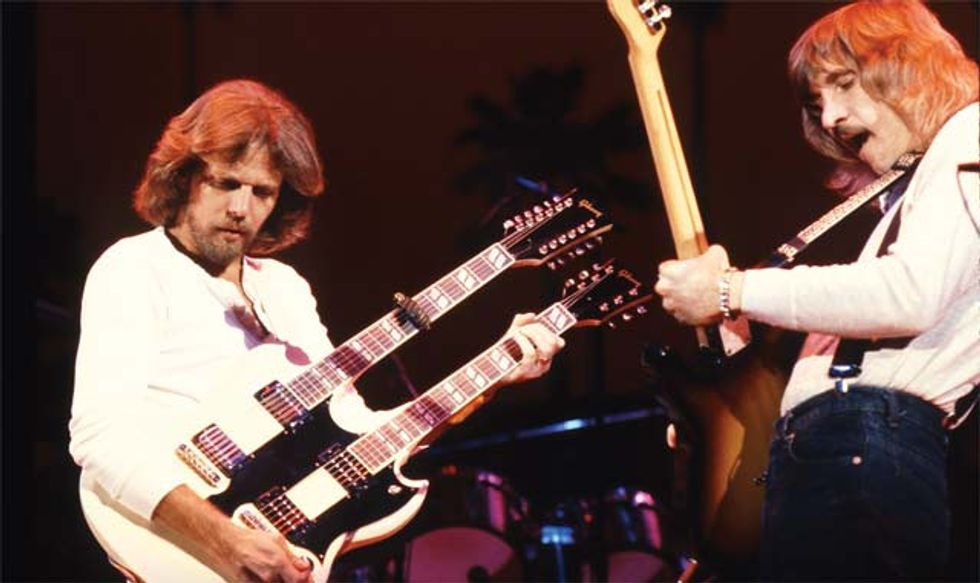
Don Felder
Another well-known proponent of the EDS- 1275 is Don Felder, formerly of The Eagles and now a bandleader and solo artist in his own right. Felder used the guitar live on “Hotel California.” His Gibson is finished in white and has custom wiring with double input jacks that allowed him to run the 12-string neck through a Leslie speaker while running the 6-string neck into his amps and pedalboard. Felder also used a capo on the 12-string neck.
Steve Howe
Steve Howe, guitarist extraordinaire of Yes, is another white EDS-1275 user. He also owns two other Gibson doublenecks, an EMS-1235 in black, and a very old doubleneck antique harp guitar. Howe used the white 1275 extensively on tour in the seventies on songs like “And You And I,” and “Starship Trooper.” The guitar has been retired from live use.
Mike Rutherford
Mike Rutherford of Genesis owns quite a few doubleneck instruments. His first was a Rickenbacker 4001 joined to a Rick 360/12 that was used on the Selling England tour. He then switched to a Rick 360/12 with a Micro-Frets Signature baritone neck built in, which proved to be troublesome onstage. Both guitars were built by luthier Dick Knight, who then built Rutherford a 12-string with a baritone 6-string neck, which also proved to be unstable. Finally, Rutherford went to Shergold instruments, and owns five or six in various combinations of 6/12 and 4-string bass/12-string.
Alex Lifeson and Geddy Lee
Alex Lifeson and Geddy Lee of Rush have both used doubleneck instruments onstage and in the studio. Lifeson’s original EDS-1275 was broken by a falling speaker horn at a gig at Nassau Coliseum in the late 1970s, but was repaired and repainted afterward. Lifeson gave the guitar to Eric Johnson as a gift, but it was stolen within weeks. Lifeson has since replaced the 1275 with another that he has used only in rehearsals as of this writing.
Rik Emmett
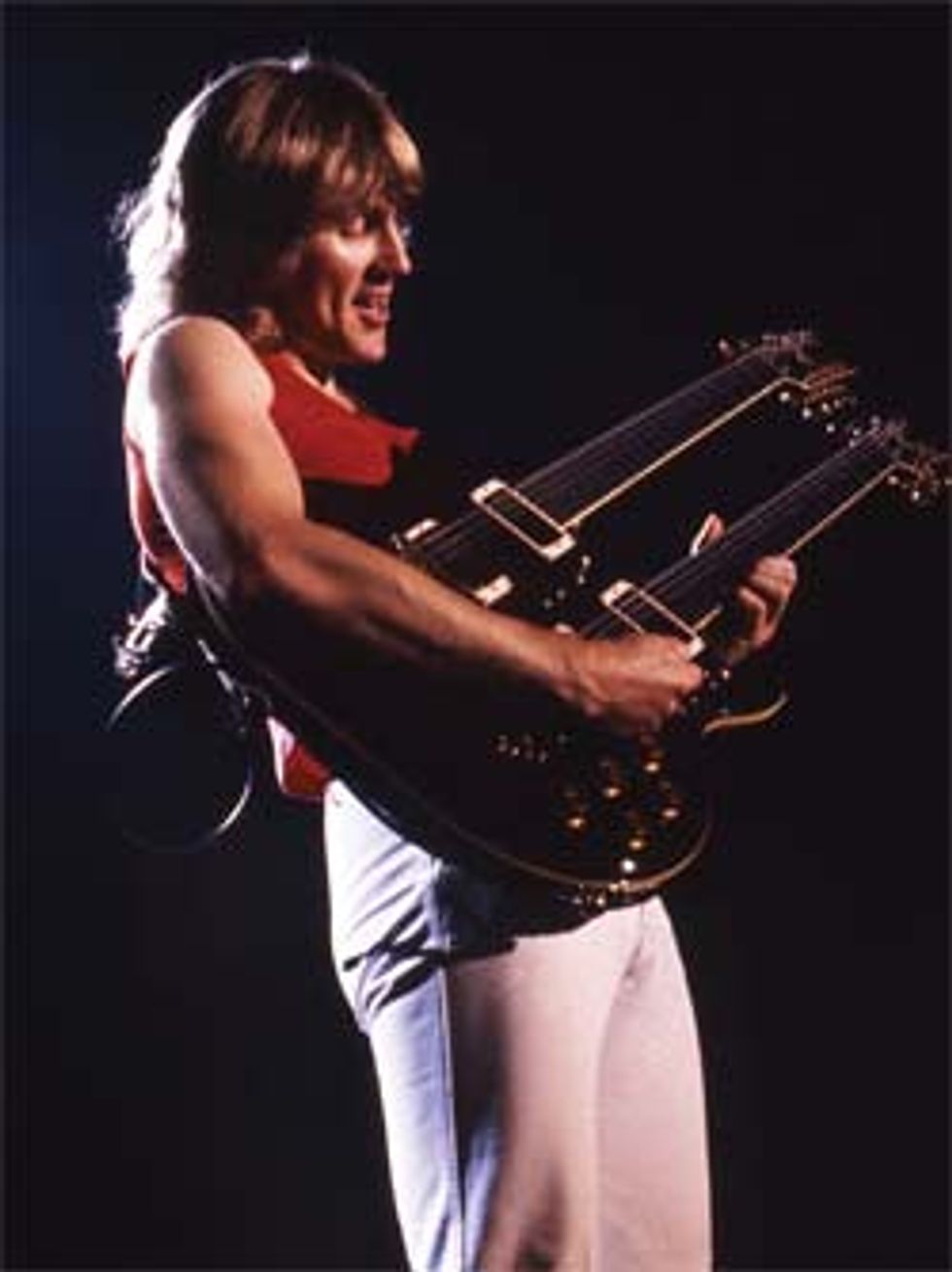 Rik Emmett in 1982 with his Ibanez Artist doubleneck. Photo by Neil Zlozower. |
“In 1989, I ordered and purchased a Steinberger doubleneck, hoping the body would be a lot lighter and that the lack of headstocks less head-heavy to wear. It was a lot more balanced, and was unbelievably good for tuning stability, but it was also very heavy. I stopped using doublenecks in 1991 or so, as I started having trouble with my neck and back. But in 2008, when Triumph had its reunion, I had also just struck a new endorsement with Gibson, and they sent me a gorgeous white doubleneck, the lightest one they could find in the Custom Shop. It still weighs a lot, and I only use it for a song here and there onstage, but it is by far the best sounding doubleneck I have ever owned. The 6-string neck has that absolutely killer Angus Young SG sound to it, and the 12-string neck rings like a bell.”
Rick Nielsen
Rick Nielsen of Cheap Trick, no stranger to oddball custom guitars, raised a few eyebrows with his massive Hamer five-neck guitar. Nielsen, world famous for his huge guitar collection, also owns various doubleneck instruments, including the one-of-a-kind ‘83 Hamer “Uncle Dick” guitar, which features a full-length caricature of Rick with his legs forming both necks and a detachable head.
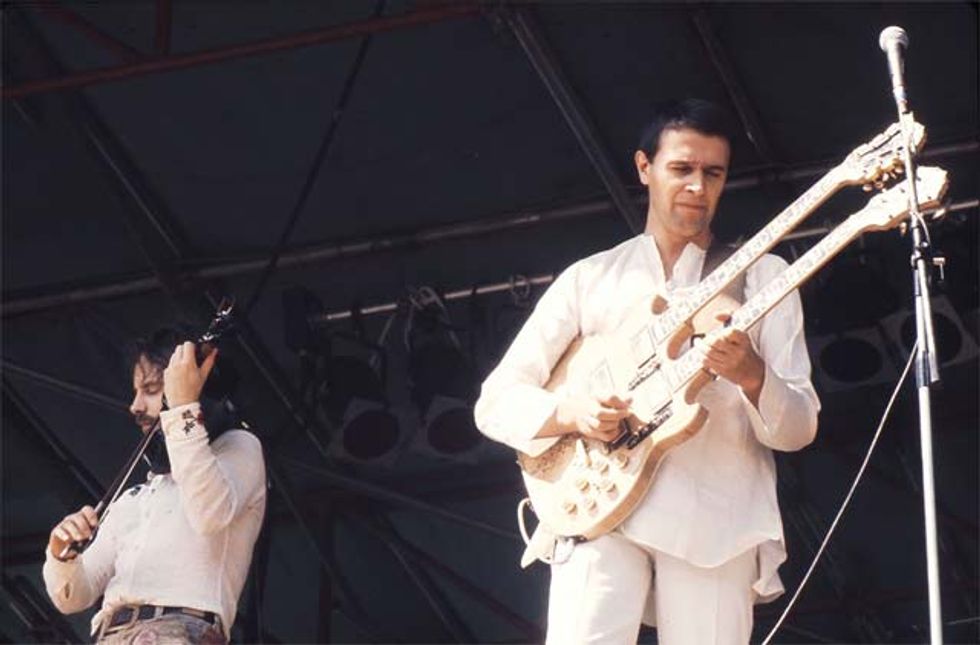
John McLaughlin
English guitarist John McLaughlin, who gained fame in the 1970s as a member of Miles Davis’ group and then as leader of the Mahavishnu Orchestra, played a customdesigned doubleneck instrument based upon the Ibanez Artwood, and built by California guitar builder Rex Bogue, in 1974. The body was constructed of eastern fiddleback maple, the necks were maple and rosewood, and the fingerboards of Gaboon ebony. Gibson humbuckers were used, but were rewound by Bogue, and the inlay work was nothing short of spectacular, as were the intricate electronics. Grover Imperial tuners were used on the 6-string neck and Klusons on the 12. Finally, the 30-pound guitar was named “The Double Rainbow” by its owner, who used it extensively during his days as the acknowledged master of jazz/rock fusion guitar.
And So Many More
Other celebrated guitarists who have used doublenecks at one time or another are Denny Laine of Wings, Johnny Echols of the earliest incarnation of the Los Angeles band, Love, and Lita Ford. Laine owned an exceedingly rare Ibanez Artwood doubleneck. Reputedly, less than a dozen were made. Echols owned and played a Gibson EMS-1235. Ford was well known for her use of a white B.C. Rich doubleneck Bich, nicknamed “The Twins.”
And there’s the inimitable Pat Metheny and his jaw dropping Pikasso guitar, conceptualized by Pat in collaboration with Canadian luthier Linda Manzer. This tripleneck instrument has 42 strings, weighs just over 6 pounds, and when fully tuned, exerts almost 1000 pounds of pressure on the necks.
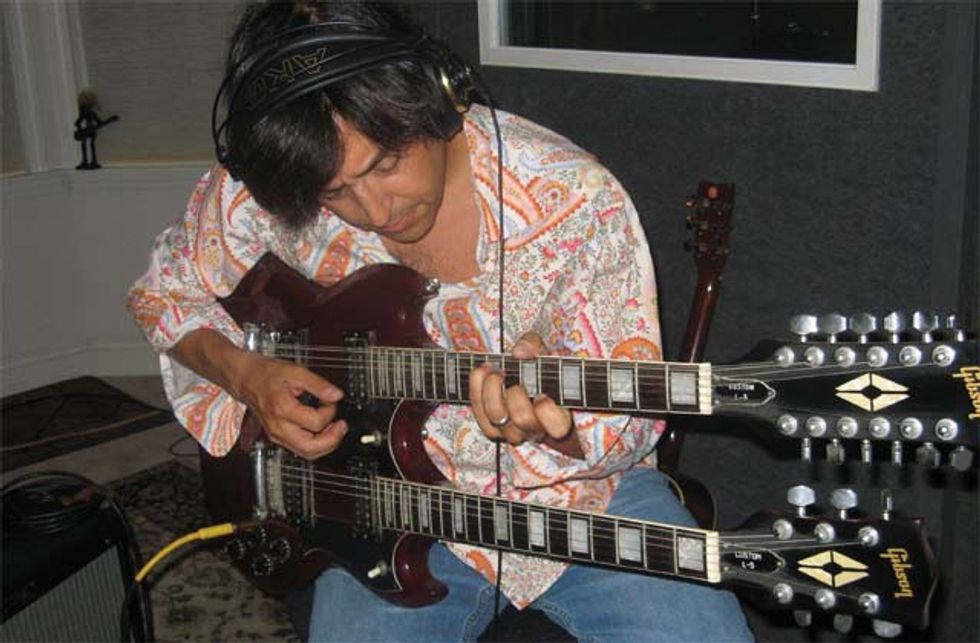
In the camp of the not-quite-world-famous doubleneck players, there’s Ron Weinstein, a talented guitarist/singer/songwriter from Long Branch, New Jersey—a loyal user of the Gibson EDS-1275 and a prime example of how most of us are influenced by our guitar idols. When questioned about why he began using one, Ron replied, “The awesome Jimmy Page inspired me, of course! I went to see Led Zeppelin at Madison Square Garden, and immediately bought a Gibson 6-12 doubleneck that still sounds and looks cool. The obvious advantage is the ability to play rhythm on the 12-string neck and lead on the 6-string neck without changing guitars. The doubleneck was instrumental (pun intended) in helping me write and produce one of my originals, ‘Trippin’ All Over The World,’ that wound up sounding like a Tom Petty song, partially because of the 1275.” (Click here to download a free mp3 of the song)
On the jazzier side, Scott Stenten, a Chicago-born but New York City-based guitarist, performs imaginative, adventurous music that employs both acoustic and electric guitars joined together in ingenious ways, with magnets, pins or screws. Stenton owns several doubleneck instruments, including custom made models by luthiers Brad Larson and Steve Klein. One of them is an Ibanez AM-100 semi-hollow electric, mated with a specially designed Klein-built solidbody. Another consists of two Martin Backpacker guitars, and yet another is a marriage of a Taylor 314CE and a Baby Taylor. All the guitars can be separated at any time if Stenton wishes. Stenton has developed a phenomenal technique that allows him to play both necks of his guitars simultaneously, a mind-blowing achievement.
Once I started researching doubleneck guitarists, however, I came to the realization that doublenecks, in whatever configuration a player may choose, open up limitless musical and tonal possibilities you would not have on a conventional single neck instrument. I had seen Jimmy Page play his 1275 many times with Led Zeppelin, so that point was obvious. The second reason is because doubleneck guitars just look so darn cool, and as guitarists, most of us are looking for something to set us apart from the crowd. Doublenecks always attract attention. Playing one onstage will definitely get you noticed.
[The author would like to thank his new friend Wally Marx for his assistance, and his buds at The Gear Page for their help preparing this article. You know who you are.]



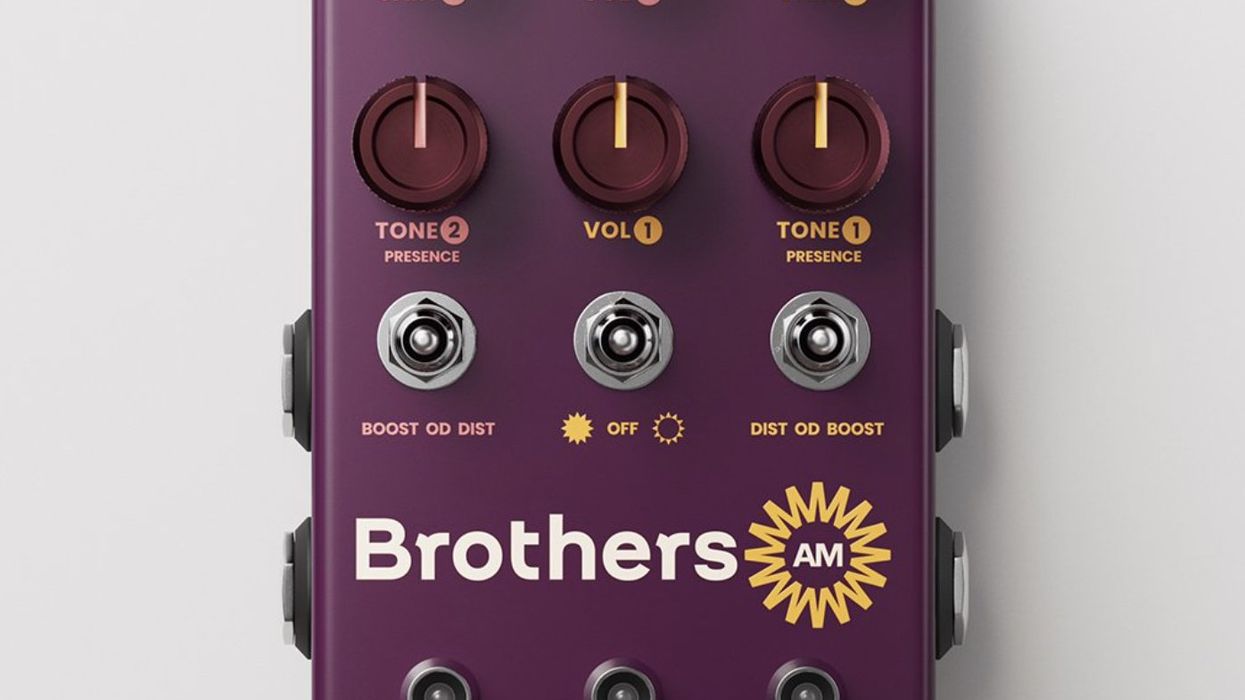
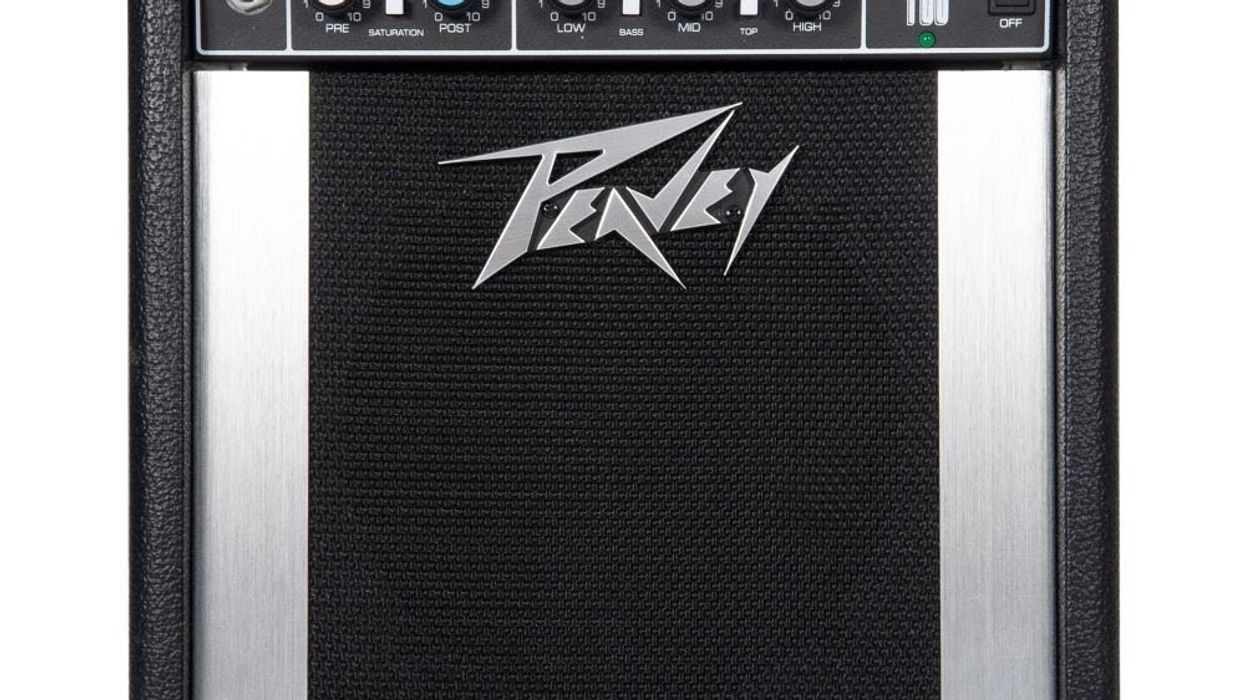
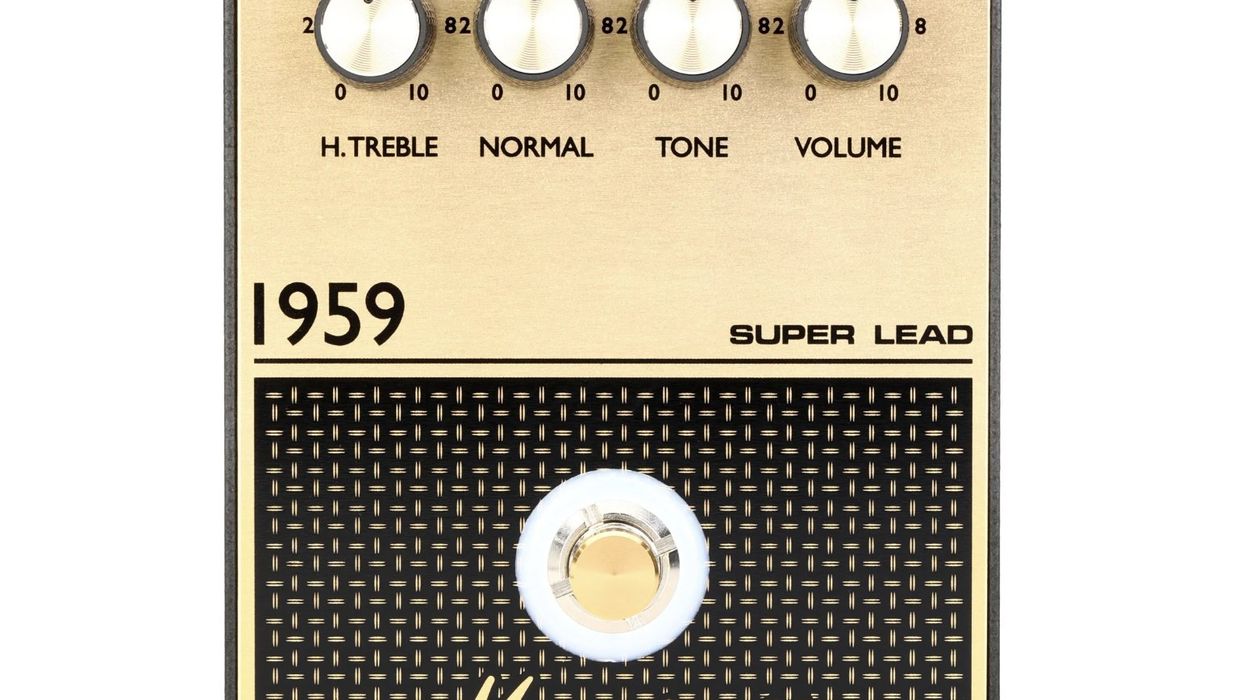




![Rig Rundown: Russian Circles’ Mike Sullivan [2025]](https://www.premierguitar.com/media-library/youtube.jpg?id=62303631&width=1245&height=700&quality=70&coordinates=0%2C0%2C0%2C0)








